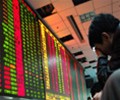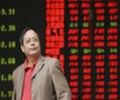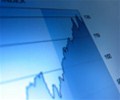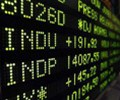
Global shares slipped broadly on Monday while the dollar hit a two-year high after a particularly strong payrolls report pushed up bond yields and tested lofty equity valuations as earnings season got underway.
European shares were set for a negative open, with EUROSTOXX 50 futures down 0.3% and FTSE futures down 0.2%. DAX futures fell 0.2%.
The hawkish jolt of US employment also raised the stakes in light of Wednesday’s consumer price figures where any bigger-than-expected core rise of 0.2% would threaten to close any chance of economic easing altogether.
Not helping matters was a surge in oil prices to their highest in four months amid signs of weakening crude shipments from Russia as Washington stepped up sanctions against the country.
Data also showed China’s export growth accelerated in December, while imports recovered, as the world’s second-largest economy braced for rising trade risks with the incoming US administration.
Markets have reduced expectations for a Federal Reserve rate cut to just 27 basis points in 2025, with the Fed now expected to cut rates to just around 4.0% compared to the 3.0% many expected last year. (0#USDIRPR)
“After a very strong jobs report, we think the cutting cycle is over,” said Aditya Bhave, deputy chief U.S. economist at BofA. “Inflation is stuck above target, with risks increasing.”
“Conversations should turn to rate hikes, which could happen if core PCE y/y exceeds 3% and inflation expectations are out of line,” he added, referring to the Fed’s preferred measure of personal consumption spending prices.
At least five Fed officials will speak this week and share their reactions to the jobs shock, with influential New York Federal Reserve Bank President John Williams set to attend on Wednesday.
The big swing in interest rates lifted the 10-year Treasury yield to a 14-month peak of 4.79%.
Higher yields on risk-free bonds increase the discount threshold for corporate earnings and make debt relatively more attractive compared to equities, cash, property and commodities.
This also increases borrowing costs for businesses and consumers, and this comes before President-elect Donald Trump’s proposed tariffs raise import prices.
This could test optimism around corporate earnings when the season kicks off on Wednesday with major banks including Citigroup, Goldman Sachs and JPMorgan.
BEARS OVER STERLING
S&P 500 futures fell 0.4%, and Nasdaq futures 0.6%, adding to Friday’s pullback.
A holiday in Japan meant trading was quiet on Monday and MSCI’s index of Asia-Pacific shares outside Japan (.MIAPJ0000PUS) fell 1.6%.
When the Nikkei closed, the futures contract (NKc1) was trading sharply down at 38.430 compared with the cash close of 39.190.
South Korean shares fell 1.0%, with the political situation still in flux as a Constitutional Court hearing began on Tuesday to decide whether impeached president Yoon Suk Yeol will be removed from office or reinstated.
Chinese blue chip0
fell 0.3%, as data showed exports rose sharply by 10.7% and imports increased 1%.
The performance was almost too strong considering it increased the surplus with the US in December to $105 billion and gave ammunition to those calling for tough tariffs on Chinese goods.
China’s central bank also stepped up efforts to keep the yuan from weakening by easing rules to allow more overseas borrowing and sending verbal warnings regarding the currency.
Figures for China’s gross domestic product, retail sales and industrial output will be released on Friday.
The inexorable rise in Treasury yields has pushed up the dollar across the board and caused the euro to fall for the eighth straight week to settle at $1.02075 EURUSD, its lowest since November 2022. The dollar index added 0.2% to 108.90 DXY.
Sterling fell 0.5% to a 14-month low of $1.2128 GBPUSD, with sentiment soured by a recent slump in the gold market on concerns the Labor government will have to borrow more to fund spending promises.
British Finance Minister Rachel Reeves on Saturday vowed she would act to ensure the government’s fiscal rules were met.
The dollar weakened to 157.35 yen USDJPY, down from a recent six-month high of 158.88, amid reports the Bank of Japan may revise its inflation forecast this month as a prelude to raising interest rates again.
Gold prices were steady at $2,688 per ounce
Oil prices continued to rise amid supply concerns as Russian seaborne exports hit their lowest point since August 2023, even before the latest US sanctions.
Brent jumped $1.38 to $81.14 a barrel, while U.S. crude jumped $1.41 to $77.97 a barrel.
Source: Reuters




